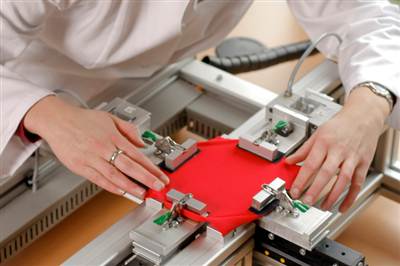Hohenstein boosts UV protection in garments

German testing institute Hohenstein has developed a material that adds functionality to high UV protection (80). The material contains titanium dioxide, which reflects and absorbs UV-radiation so that it does not reach the skin.
Stretchy materials on the back and sleeves make the garment comfortable to wear while special zones under the armpits and in the stomach area have been optimised to deal with sweat production.
It has been tested under UV Standard 801 which Hohenstein says is the most practical standard for apparel as UPF is measured on the stretched, wet textile, and after mechanical wear and tear. It assumes the worst-case scenario of the highest UV radiation level: the sun spectrum in Melbourne, Australia, at the height of the summer.
The German government’s medical committee has recently recommended that skin cancer should be recognised as an occupational illness for those working outside. “The pressure on employers to require such clothing to be worn and make it available may now increase considerably,” said Hohenstein.
Image: Under UV Standard 801, the UV protection factor is calculated in real-life conditions, including when the textile has been used and stretched. CREDIT: Hohenstein








